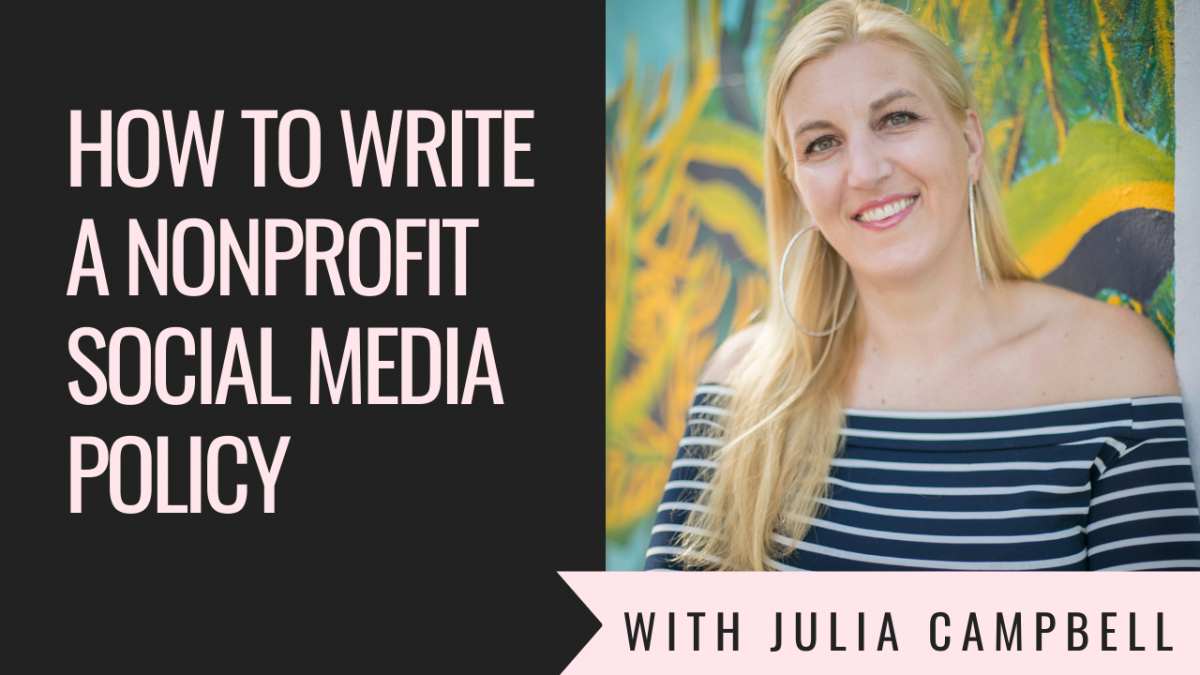People that are skeptical of social media may be concerned that opening up this can of worms at your nonprofit will create conflicts of interest, policy breaches, and more messy legal situations.
Work to create clear and concise policies that empower and educate all staff and volunteers.
Some nonprofit supervisors want to turn a blind eye or simply forbid everyone from using Facebook at work.
This is counterproductive and in my opinion, pointless.
A better idea is to provide staff and volunteers with helpful guidelines as to what is acceptable and what is discouraged.
These guidelines would include examples of what is ok to share online, and what is not ideal.
Social Media Policy trainings are the perfect teachable moment for younger people in the office who may not be accustomed to censoring themselves online in any way, and will also create security for others who may not be sure where the boundaries are on social media.
Internal Social Media Policies
Internal social media policies should accomplish two objectives:
- Spell out clearly what kind of behaviors are discouraged on social media by staff, volunteers, and anyone else who represents the organization; and
- Specify what types of behaviors are encouraged or even required by this group.
Look at your current organizational policies for employees and volunteers if you have a handbook or other materials used during orientations or trainings.
You may be surprised what your current staff and volunteers DON’T know about the policies you already have in place on paper, but may not be readily enforced.
Your organization needs to ensure that everyone is on the same page about the following questions:
- What organization-related information should be always confidential and why? Is the safety of the staff and clients at stake if there is a confidentiality breach? Will you lose funding? Will you lose integrity and lose the trust of the community?
- What do breaches of confidentiality look like? Give examples, either from real life or made up. Show offline and online examples.
- What are the individual consequences for ignoring these policies? What will happen? Will they get fired? Unpaid leave?
- Do you allow and encourage staff to identify themselves as employees on their social networks and on official social media channels?
- Are staff and volunteers required to participate in social media work by sharing photos, videos, stories, and other content with the marketing manager?
A nonprofit should do its best to encourage an open, transparent culture of education and empowerment around social media, not one of fear, accusations, and finger-pointing.
Model good behaviors of productive sharing and positive participation on social media.
External Social Media Policies
It is also vital for a nonprofit to have disclaimers or brief statements on their social media accounts that explain what is encouraged and what could get someone removed.
If there is no place to add this policy to your bio on a particular social media site, make sure this public-facing policy resides somewhere on your website.
When formulating your social media policies, questions to address include:
- What will you encourage people to post on your nonprofit’s Facebook page, and what is inappropriate to share there?
- Will you let your clients interact in your online communities as long as they are anonymous? Jayne Cravens,TechSoup’s Community Forum Manager, recommends: “The best way to protect confidentiality is to think about humans as much as, if not more, than the technology.”
External policies should be kept simple, but be clear, concise, and unambiguous. This way, if you remove a comment or ban a person from your social media accounts, you can refer back to your policy, your online community knows what to expect, and if they violate the policy you can assure them that they are not being arbitrarily targeted.
Sample language from a Facebook policy I created with my client Beverly Bootstraps:
Welcome to the official Facebook fan page for Beverly Bootstraps Community Services, Inc.! Here we will share news about our programs to provide critical resources to families and individuals so that they may reach self-sufficiency. We will also post updates about events, photos, videos, interesting stories and news articles.
We want to keep our Facebook page an open forum, but we are also a “family friendly” page, so please keep comments and wall posts clean. We want you to tell us what’s on your mind, but if it falls into any of the categories below, we want to let you know beforehand that we will have to remove it:
– We do not allow graphic, obscene, explicit or racial comments or submissions nor do we allow comments that are abusive, hateful or intended to defame anyone or any organization.
– We do not allow third party solicitations or advertisements. This includes promotion or endorsement of any financial, commercial or non-governmental agency. Similarly, we do not allow attempts to defame or defraud any financial, commercial or non-governmental agency.
– We do not allow comments that support or encourage illegal activity.
Also, the appearance of external links on this page does not constitute an official endorsement on behalf of Beverly Bootstraps – it just might be something we found interesting and wanted to share!
Whew! Now that all THAT is out of the way, let’s get to know each other. Post, share and tell us what you’d like to see more of from Beverly Bootstraps!
Examples of internal and external social media policies for nonprofits can be found at the book resource site: www.jcsocialmarketing.com/socialmediabook.

